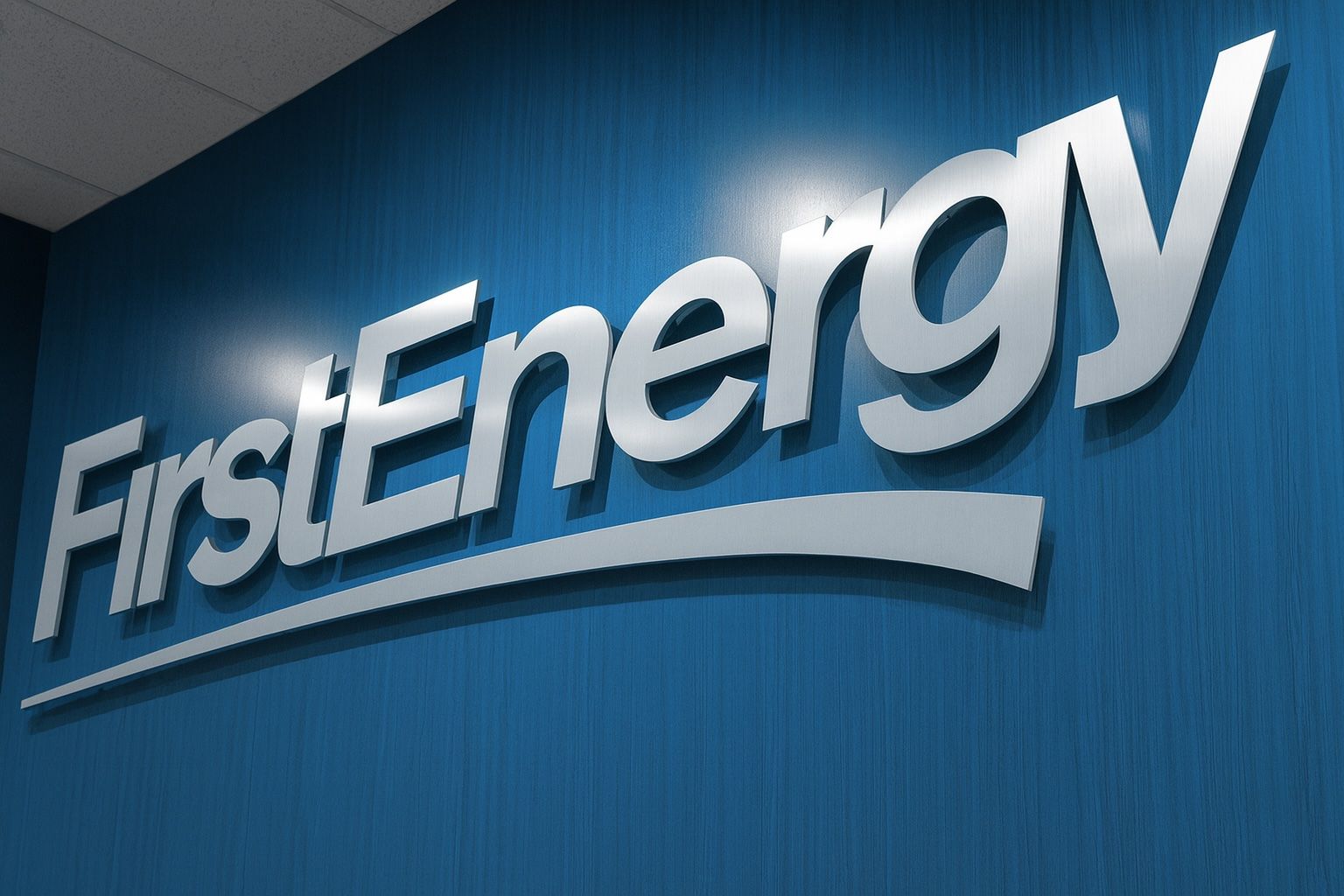- Board-approved pay changes: FirstEnergy’s board has amended its Executive Severance and Change-in-Control plans (effective Jan. 1, 2026) [1]. The CEO is now explicitly included, and most senior roles switch from years-of-service payouts to fixed multiples of salary [2] [3]. Employees may keep the old formula if it pays more through 2025 [4]. COBRA health premiums will be waived for up to 18 months under the new plan [5].
- CEO cash severance jumps: Under the updated Change-in-Control (CIC) plan, non-CEO executives generally retain 2× base salary plus bonus for qualifying terminations. But the CEO’s payout rises sharply – 2.99× base salary plus target short-term bonus on a change in control [6] [7]. (By comparison, a recent study finds 2× salary is the norm for CEO severance [8].)
- New equity vesting rules: FirstEnergy approved new restricted stock unit (RSU) agreements. Now, unvested time-based RSUs will vest in full on a change in control (unless replaced), and performance RSUs will vest at target levels on a CIC [9]. All these changes “align [FirstEnergy]’s executive compensation programs with current practices” [10] [11], pending each executive’s signed release of claims.
- Pennsylvania DSP-VI auction: Separately, CRA International (the Independent Evaluator) announced that FirstEnergy’s Pennsylvania utilities are opening their Default Service Program VI (DSP-VI) auction. Part 1 bidder applications run Sept. 26–Oct. 9, 2025, ahead of the main auction on Nov. 12, 2025 [12] [13]. The auction (a “descending-price clock” format) will procure full-requirements supply for default-service customers in Met-Ed, Penelec, Penn Power and West Penn Power territory [14] [15].
- Auction products: In the Nov. 2025 auction, FirstEnergy will buy fixed-price energy supply for residential and commercial classes: 12-month and 24-month contracts covering delivery from June 2026 through May 2028 [16]. These contracts set the power rates for customers who don’t choose a competitive supplier.
- Market context: FirstEnergy stock has been near 52-week highs. Analysts at Barclays, Jefferies and others have recently raised price targets (to ~$45) and noted an “undervalued growth plan,” though they warn regulatory hurdles (especially in Ohio) remain [17].
Executive Severance Plan Overhaul
In late September 2025, FirstEnergy (NYSE: FE) announced that its board has revamped the executive severance plan [18]. Under the new Executive Severance Benefits Plan (effective Jan. 1, 2026), the company explicitly adds the CEO and other top officers and replaces most old service-based payouts with fixed multiples of salary [19] [20]. For example, the CEO, other SEC-defined officers and Executive Council members will now receive 1.5× their base salary as severance if they are involuntarily terminated (e.g. in a facility closure or corporate restructuring) [21] [22]. Previously the CEO was not in the plan at all – severance was paid by years of service (a minimum of 52 weeks up to 104 weeks of salary) [23].
Other executive tiers were also clarified: presidents and vice presidents get 1× base salary, while director-level managers get 3 weeks’ pay per year of service (capped at 52 weeks) [24]. As an added benefit, executives who qualify for COBRA health coverage will have their health insurance premiums paid for up to 18 months post-termination [25]. FirstEnergy even allows participants to keep the older formula if it would yield a larger payout by year-end 2025 [26]. The company says these updates “modernize” the severance program and bring it in line with industry practice [27] [28].
(For context, recent studies show that 2× salary is a majority practice for CEO severance in the S&P 500 [29]– meaning FirstEnergy’s old formula was already generous, and the new fixed-multiple approach is even higher for senior roles.)
Change-in-Control (CIC) Plan Enhancements
FirstEnergy’s Change-in-Control Severance Plan – which governs payouts when the company is sold or merged – was also amended [30] [31]. The core benefits remain similar for most executives: typically 2× base salary plus target bonus upon a qualifying CIC termination [32]. However, the CEO’s cash severance multiple has been significantly increased to 2.99× base salary plus target short-term incentive (bonus) [33]. (In practical terms, that roughly triples the CEO’s payout compared to base pay.) Other CIC benefits – like two years of health coverage and up to $30,000 in outplacement – were largely retained from the prior plan [34].
Along with cash, FirstEnergy’s CIC update includes new stock award provisions. Under the new RSU award agreements, all unvested time-based RSUs would immediately vest on a change in control, and performance RSUs vest at target level – unless replaced with equivalent awards [35]. This mirrors common market practice (accelerating equity vesting on a sale). FirstEnergy notes that all such benefits require the executive to sign a general release of claims [36]. In sum, the revisions boost guaranteed payouts for top leaders – especially the CEO – if a buyout occurs, aligning the package more with peer utilities [37] [38].
Pennsylvania Default Service Auction Begins
On the same days, FirstEnergy’s Pennsylvania affiliates (Met-Ed, Penelec, Penn Power, West Penn) launched their DSP-VI default supply auction [39] [40]. CRA International – a consulting firm retained as Independent Evaluator – announced via BusinessWire that Part 1 bidder applications open Sept. 26 and are due by Oct. 9, 2025 [41] [42]. The sealed-bid auction itself is set for Nov. 12, 2025. This continuing auction series (started in late 2022) procures “full requirements” generation for customers who don’t shop for power. CRA notes the process will use a simultaneous, multi-round descending-price clock auction [43] – a format where prices fall each round until enough bids meet the needed quantity.
The upcoming DSP-VI round will secure fixed-price supply contracts for residential and commercial default customers. Specifically, FirstEnergy is buying four new products: 12-month and 24-month contracts for the residential class, and 12-month and 24-month for commercial customers, covering delivery from June 2026 through May 2028 [44]. These contracts lock in the power rates for thousands of PA households and businesses on FirstEnergy’s default service. (Past auctions have similarly set power costs for non-shopping customers over multi-year periods.) The Pennsylvania Public Utility Commission has approved the DSP-VI program under which these auctions operate [45], and CRA has already posted informational webinars for interested bidders.
Impact and Analyst Commentary
FirstEnergy is framing both moves – the pay-plan overhaul and the DSP auction – as strategic steps in its long-term plans. Analysts have noted that FirstEnergy’s stock has been strong (near 52-week highs) as the company beats earnings and invests in its distribution network [46]. In fact, Barclays recently upgraded FE to “Overweight,” citing an “undervalued growth plan” after meeting with management [47]. Jefferies and Mizuho also raised their 12-month price targets (to $45) on FirstEnergy [48], noting robust performance in the utility’s core business. However, analysts caution that regulatory issues – especially approval of rate plans in Ohio – remain key to whether the improved outlook is sustained [49].
In summary, FirstEnergy’s latest filings show a significant boost in leadership payouts upon terminations or mergers, reflecting an effort to “modernize” executive comp as the company navigates growth projects [50] [51]. At the same time, the company is executing its legal obligation to buy power through the PA default service auction, which will set energy supply costs for the coming years [52] [53]. Investors and consumers will be watching both developments closely: the compensation changes can affect governance perceptions, while the auction ultimately influences retail electricity rates in FirstEnergy’s territory.
Sources: SEC filings and press releases as reported by Investing.com [54] [55] [56] [57]; CRA International BusinessWire release [58] [59] [60]; industry studies [61]; analyst commentary [62].
References
1. in.investing.com, 2. www.stocktitan.net, 3. in.investing.com, 4. www.stocktitan.net, 5. in.investing.com, 6. in.investing.com, 7. www.meridiancp.com, 8. www.meridiancp.com, 9. in.investing.com, 10. in.investing.com, 11. www.tipranks.com, 12. www.stocktitan.net, 13. www.stocktitan.net, 14. www.stocktitan.net, 15. www.stocktitan.net, 16. www.stocktitan.net, 17. in.investing.com, 18. in.investing.com, 19. in.investing.com, 20. www.stocktitan.net, 21. in.investing.com, 22. www.stocktitan.net, 23. in.investing.com, 24. in.investing.com, 25. in.investing.com, 26. www.stocktitan.net, 27. www.tipranks.com, 28. in.investing.com, 29. www.meridiancp.com, 30. in.investing.com, 31. www.stocktitan.net, 32. in.investing.com, 33. in.investing.com, 34. in.investing.com, 35. in.investing.com, 36. in.investing.com, 37. in.investing.com, 38. www.stocktitan.net, 39. www.stocktitan.net, 40. www.stocktitan.net, 41. www.stocktitan.net, 42. www.stocktitan.net, 43. www.stocktitan.net, 44. www.stocktitan.net, 45. www.stocktitan.net, 46. in.investing.com, 47. in.investing.com, 48. in.investing.com, 49. in.investing.com, 50. www.tipranks.com, 51. in.investing.com, 52. www.stocktitan.net, 53. www.stocktitan.net, 54. in.investing.com, 55. in.investing.com, 56. in.investing.com, 57. in.investing.com, 58. www.stocktitan.net, 59. www.stocktitan.net, 60. www.stocktitan.net, 61. www.meridiancp.com, 62. in.investing.com










